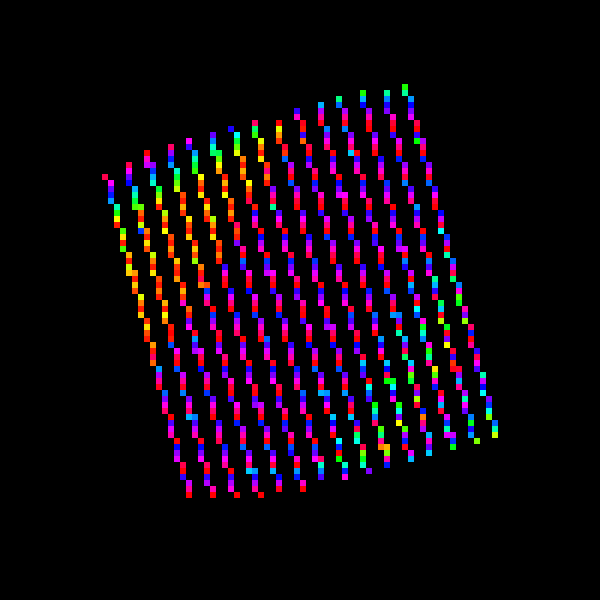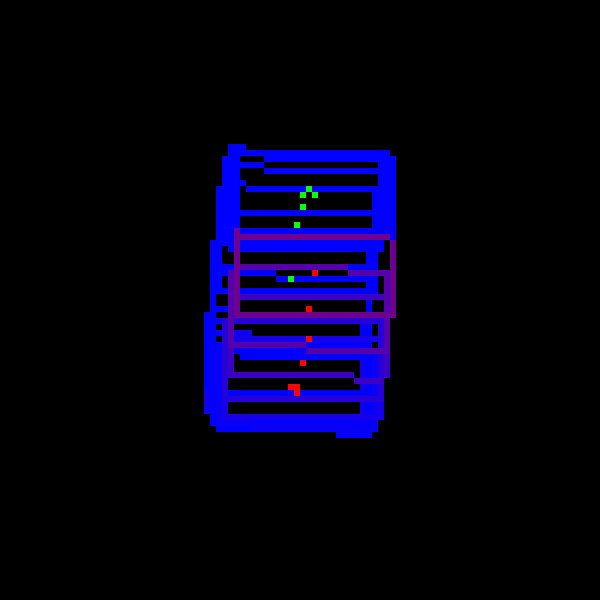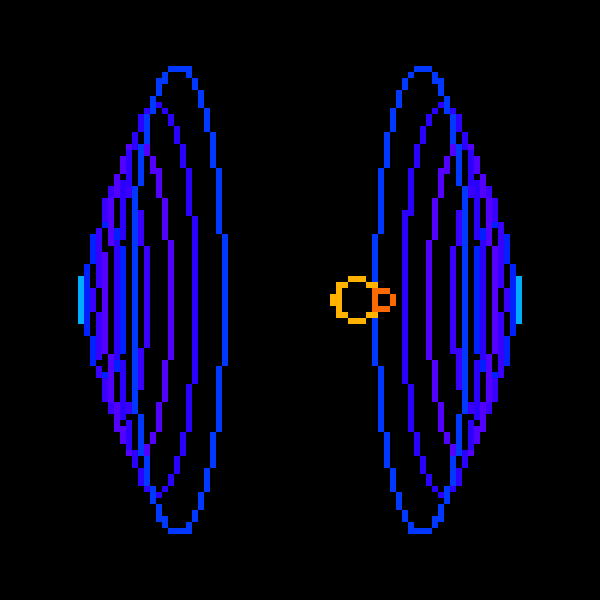Slowing down with... p1xelfool
A short interview with artist p1xelfool

(note: if you want to read this article somewhat in line with p1xelfools' reknown aesthetics, test drive this button just down here - when you have had enough, just reload the page to go back to normal).
All right, let us continue with the series of artists' interviews. It's time for p1xelfool, who as you surely have noticed has come up with a very characteristic style and has achieved the rare feat of having a sizeable number of people looking forward to his next release to grab it quickly. If you are not in the orbit of the Hicetnunc'ers then probably you should spend some minutes with his creations. Without further ado, let's dive in.
Q: What is your background?
A: My career started with an uncle that used to be the computer guy in my family, showing me that I could share things as websites. With that, anything related to the internet became an obsession. By the age of 14 I designed my first paid web page for the company my father used to work for.
At 15 I discovered that there was a thing called art school, so I joined at 16 and by 18 I received my art/design professional degree. A year later I also decided to take a bachelor’s degree in advertisement.
So that’s basically my formation and I’ve been going from music to design to photography to oil painting, exploring many fields, but in the past five years generative art has become the center of my practice.
Q: How did you get into art? Is it your main activity?
A: Despite having my hands on visuals 90% of the time, my very first creative practice was music. My grandfather used to be a choral conductor and had a few instruments around his place (where I used to spend a lot of my time as a kid), so I learned to play because of that. That came before the whole professional stuff.
And although I’ve been exploring artistic practices on many experimental projects, most of the time in the past 18 years they have been a parallel stuff. So for all that time, design used to be my main way of income. But two years ago I decided to work with a curator to organize and plan my career as an artist and last week I finally quit my design job to be a full time artist.

Q: Which are your artistic influences?
A: One of the main subjects of my work is time. So basically everything that touches on that subject is of my interest. From phenomenology to scientists doing experiments. And sci-fi, since it’s a place where those discussions are taken to extreme places.
Although I believe my work is of easy understanding, I love the complexity of the subject.
Q: What has the art NFT movement meant to you? Has it changed your art practice? Does it enable you to do something that you couldn't do before?
A: I’ve been interested in crypto for 6 years. It used to be a very effective way for me to receive payments from overseas (I’m from Brazil), avoiding huge fees from banks and receiving it at a very fast pace, but NFTs didn’t take my attention until the end of last year. Two months ago I decided to take a deep dive and in April I decided to start to sell my work.
To my surprise, it started to sell really fast with editions selling out in 5 minutes. Fast forward and I’ve quit my job.
So I can definitely say that NFTs changed my life. I’m far from being rich, but the huge support from the community allowed me to save enough to take the leap and for the first time in 18 years, work as a full time artist.

Q: Would you like to highlight any of your works? Any story you'd like to tell around any piece?
A: I really like ‘éon’. The name is based on the geological measurement of time and it is an entity, as I like to call them, that bends time. I really like that concept, because as humans we are attached to our time perception. Certain events can really be perceived very differently from what our clocks say and there are many experiments out there exploring that matter.
The concept also reflected on the dynamics of sales for that piece. Since they usually are sold in 5 minutes, I’ve done an affordable open edition, stretching the time of sales for 24 hours and then burning the remaining unsold editions at the end of that time (as John Karel did).

Q: Which NFT platforms are you using? Both as an artist and as a collector or passerby.
A: Right now, only Hic et Nunc.
Q: What would you like to see in the platforms you use in the future? Would you be interested in having some kind of support towards, e.g., promotion, artists discovery, the possibility of working with curators, functionalities to make collaboration and debate easier? Etc.
A: I think the ability to organize things in collections, both as a creator and a collector is a great one. Artist discovery can also be especially important to find hidden gems and give a boost to unknown artists.
And last but not least, have a wider view of the stats regarding sales and purchases. I feel that it can be important to those, like me, that are seeing NFTs as a major source of income. It’s important to organize yourself financially.

Q: Any thoughts regarding the underlying decentralized nature of Hic Et Nunc and other NFT marketplaces? How does it impact local communities?
A: It’s key for creating opportunities to those that still don’t have an audience. I literally started with zero followers on Twitter and had never sold a piece before. That would probably be impossible on any platform that has gatekeepers.
Q: Any other artist whose work you'd like to recommend?
A: TokBLOK made me go after this piece on the secondary market because I could not stop thinking about it. It’s one of the favorites in my collection.
Adeliia Koldarova’s pieces (for example, The wall and 4 a.m) merge aspects of daily life with some fictional events (I guess) and they make me want to explore the unknown.
Q: Any artist who you'd like to see in this series of interviews?
A: Nicolas Sassoon, Sarah Zucker, Thaís Koshino.
Q: Any closing thoughts?
A: Thank you so much for the invite. Seeing the trajectories of your peers is inspiring and talking about your own work makes you visit the past and look to the future. It’s a necessary exercise that we don’t do oftenly.
(Thank you, p1xelfool!)
